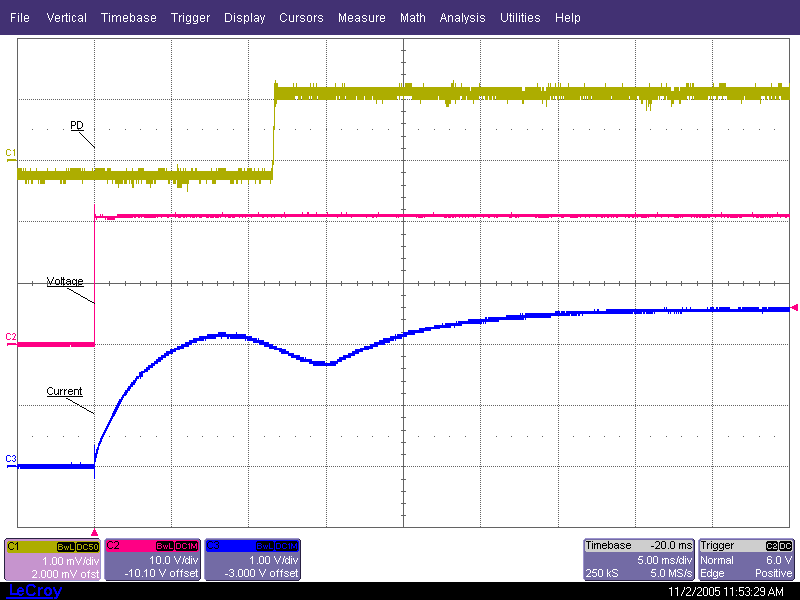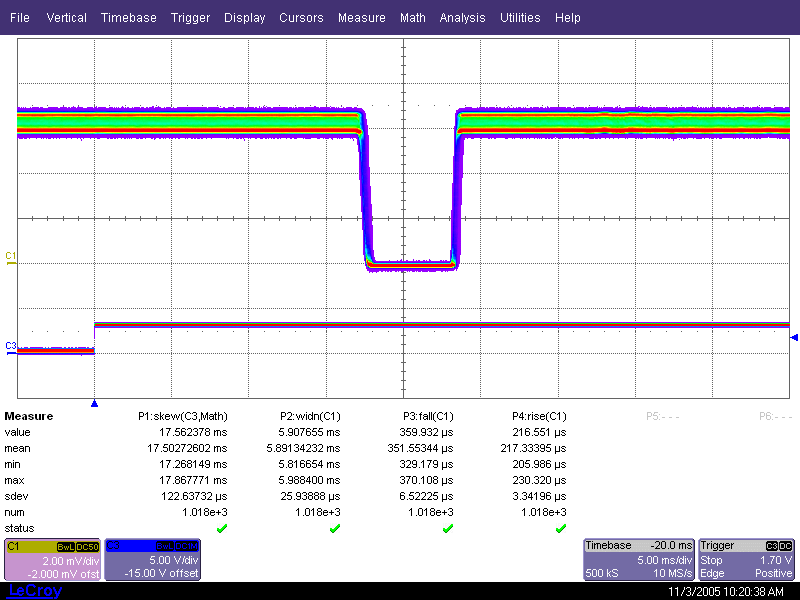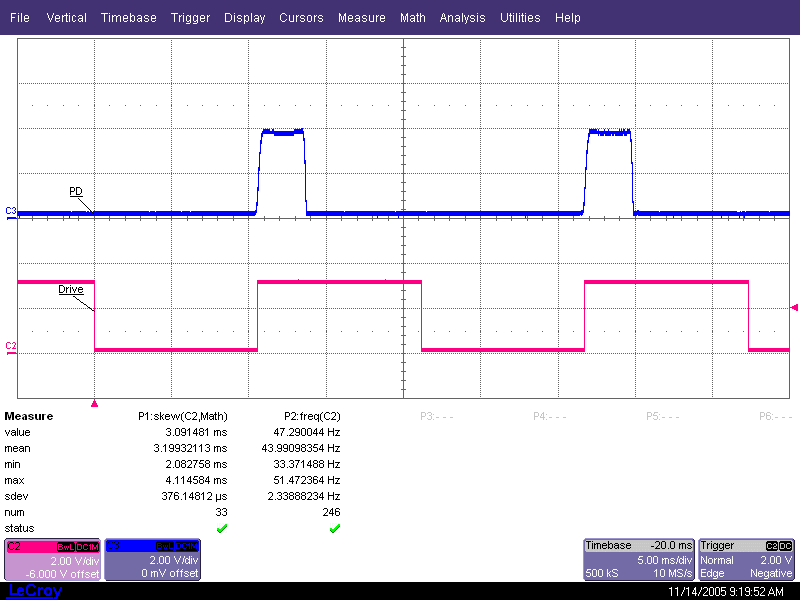
Alan Stummer, Research Lab Technologist
Shutters for KHz Laser
NOTICE: This webpage and associated files is provided for reference only. This is not a kit site! It is a collection of my work here at the University of Toronto in the Physics department. If you are considering using any schematics, designs, or anything else from here then be warned that you had better know something of what you are about to do. No design is guaranteed in any way, including workable schematic, board layout, HDL code, embedded software, user software, component selection, documentation, webpages, or anything.
All that said, if it says here it works then for me it worked. To make the project work may have involved undocumented additions, changes, deletions, tweaks, tunings, alterations, modifications, adjustments, waving of a wand while wearing a pointy black hat, appeals to electron deities and just plain doing whatever it takes to make the project work.
Downloads
- All files
Overview
Solenoids were first looked into. Virtually all traditional rod-in-a-coil clinkers are too slow, however, voice coil motors might work, such as from GeePlus.
Stepper motors are being investigated. Danaher/Portescap has fast stepper motors that canprobably work, if the specs can be interpreted and samples found... Hurst Mfg also has fast hybrid steppers , but the small 1.8° step size may mean several steps to open or close the shutter. Their online specs are very limited but at least you can purchase online. Of interest is the H17ET series. Note: at 1.8° steps, a 159mm long arm will swing 5mm at its tip.
Tests

On the screen capture on the left, the PD is in red, coil voltage in red, coil current in blue. Note the dip in current caused by the counter-EMF generated as the plunger moves through the coil.
Setup was a HeNe shining on a photodiode through the centre of the shutter.
 Rotary solenoid, Oak Industries 4-6325-316 (no return spring), 24V drive, 6.8mm round beam interrupter - turning
on
. The delay over 1,000 cycles was very repeatable. A complimentary test to measure the gravity powered
return when the power is turned off gave a much larger variation in both delay and opening times.
Rotary solenoid, Oak Industries 4-6325-316 (no return spring), 24V drive, 6.8mm round beam interrupter - turning
on
. The delay over 1,000 cycles was very repeatable. A complimentary test to measure the gravity powered
return when the power is turned off gave a much larger variation in both delay and opening times.
On the screen capture on the left, the top trace is the cumulative PD and the bottom is the drive signal. The "skew" time is from the drive signal until the bem if half blocked, "widn" is the time the beam is blocked. Note how the fall time (time from 100% to 0% beam) is longer than the rise time due to acceleration of the beam blocker.
Similar tests were performed with a rotary solenoid from Shindengen, model M80329R5.9334, 24V drive, 6.5mm flat beam interrupter. The results were very similar except that the return sping in this solenoid caused more stable return pulses.
Setup was a HeNe shining on a photodiode, interrupted by the arm on the rotary solenoid.
 Modified Omron G8JN-1C7T-DC12 relay, running at 47Hz. Red trace is 12V coil drive, blue is the photointerrupter
(when red is high and coil is on, PD blue will go low). Modifications include removing all three contacts and
installing a metal limiter to set the de-energized position.
Modified Omron G8JN-1C7T-DC12 relay, running at 47Hz. Red trace is 12V coil drive, blue is the photointerrupter
(when red is high and coil is on, PD blue will go low). Modifications include removing all three contacts and
installing a metal limiter to set the de-energized position.
Setup was using a Honeywell HOA1877-2 photointerupter, beam size is 0.050" (1.27mm).
Return to homepage
| Sorry, no more chance for asking direct questions, queries, broken links, problems, flak, slings, arrows, kudos, criticism, comments, brickbats, corrections or suggestions. |

|